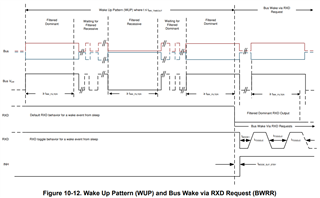Hi team,
Could you help explain the device wake up logic? When this device get the wake up signal from the system, how can this device wake up MCU? By RX/TX or a specific signal? Could you help show some details? And about the selective mode, how to calculate the total current consumption? What does the additional current mean in the below diagram? And What current should I add together to get the total current?



